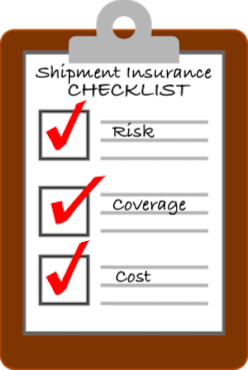When it comes to entrusting your sold items to a postal carrier, insurance can give you more than peace of mind. Although only a relatively small percentage of the billions of packages shipped each year arrive damaged or are lost altogether, that’s no consolation if your package happens to be among that minority.
The bottom line is: If it’s expensive and/or fragile and/or irreplaceable, it pays to insure it.
Buying insurance does increase the overall cost of shipping, so it is not a service to be added willy-nilly. But as an online seller, you’re responsible for getting a sold item to the buyer in its original condition.
If it arrives broken — or worse yet, doesn’t arrive at all — then you’re on the hook for a refund of that buyer’s payment, whether you insured their package or not. Better to pay for insurance and not need it than the other way around!
As for the covering the cost of insurance, you have several options. Bear in mind that eBay no longer allows sellers to charge buyers for insurance as a specific line item. However, you can fold it into your handling charge. If you’re offering free shipping, factor insurance into the item’s price as part of the cost of shipping. Otherwise, any refund is going to come straight out of your pocket.
Proper packaging is essential to preventing breakage enroute, but it’s not foolproof. The most carefully packed item may still turn up in pieces upon delivery. Worse yet, the carrier’s insurance may not cover it.
For example, USPS specifically excludes “Articles so fragile that they cannot be carried safely in the mail regardless of packaging” as well as “Articles not adequately prepared to withstand normal handling in the mail.” Those terms leave a lot of wiggle room when it comes time to file a claim!
A certain amount of insurance may be included in the cost of postage. UPS and FedEx routinely provide up to $100 in insurance on every package they ship, while USPS’ Priority Mail rates automatically include $50 insurance ($100 for USPS Priority Mail packages shipped through eBay).
In some cases, this is perfectly adequate — except when it isn’t. For pricey and fragile items such as electronics, jewelry, and many kinds of collectibles, that’s not going to be sufficient coverage to compensate for loss of or damage to that item.
In addition, it’s important to be sure to insure items for full market value, not just the amount for which you sold them. Under-insure an item, and you may still end up out of pocket; over-insure it, and the carrier may dispute the value.
Remember too that shipping insurance is to protect you as the seller, not the buyer. For items sold on eBay, the buyer is covered by eBay’s Money-Back Guarantee, which states, “Get the item you ordered or your money back.” Other marketplaces likewise expect you to refund the buyer for lost or damaged items, whether or not you in turn are reimbursed for doing so.
In sum, as with any other form of insurance, postal insurance essentially boils down to a gamble: You’re betting that your item may be damaged or even lost in transit, while the insurance provider is betting that it won’t. It’s a bet you’d rather lose, of course, but insuring your packages ensures a win-win situation every time.



 ShipSaver
ShipSaver April 18, 2019
April 18, 2019 
